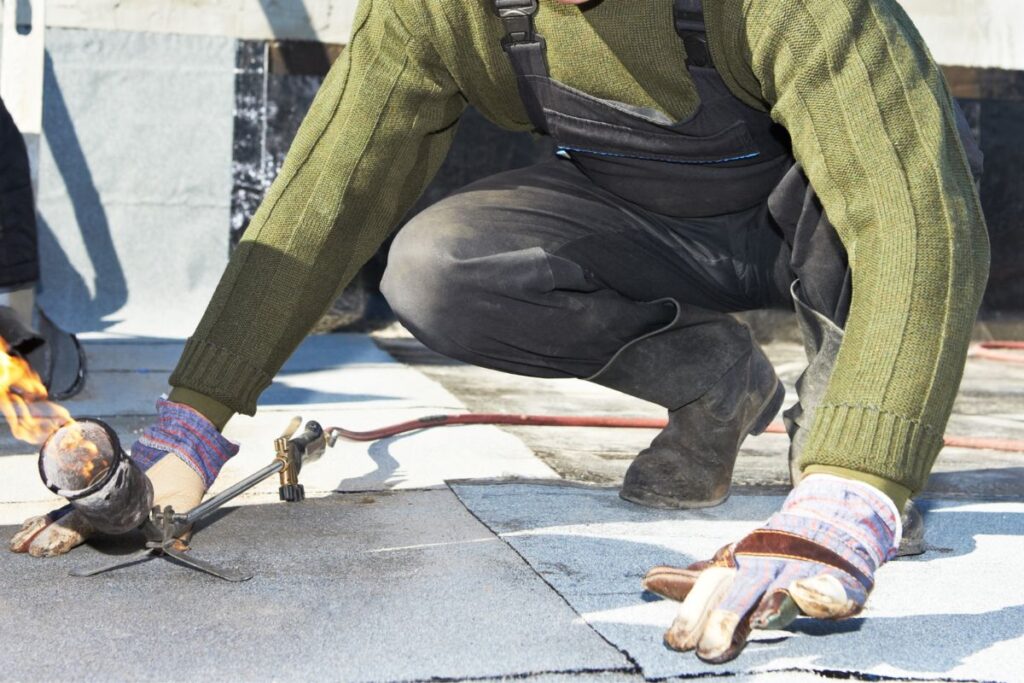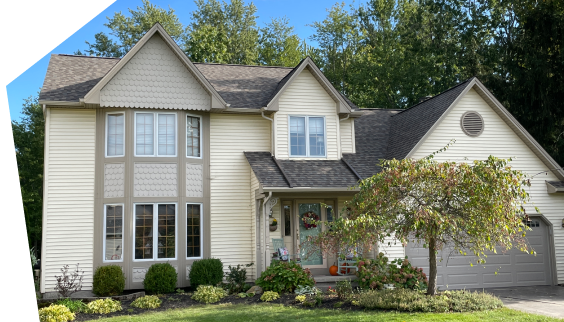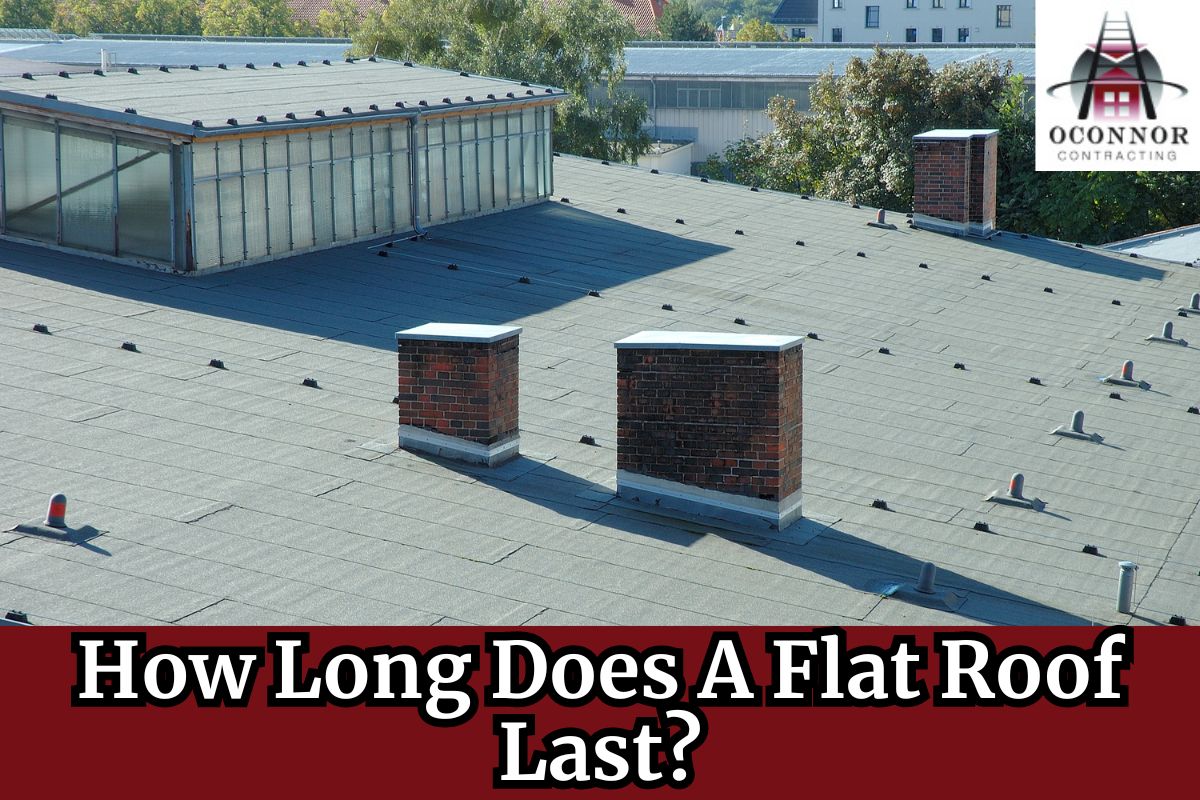Flat roofs are a common option for modern homes and commercial and industrial structures. They are more affordable than pitched roofs and give off a sleek and simple appearance. Still, one of the most frequently asked questions is how long flat roofs last. The material used, the quality of the installation, the amount of maintenance, and the climate all affect the answer to this question.
Let’s delve into this blog post to get a better understanding of the answer to the question, “how long does a flat roof last?” so you can make a proper decision for your roof.
What Is The Average Lifespan Of A Flat Roof?
Several factors influence the longevity of a flat roof, including the quality of materials utilized, installation techniques, maintenance practices, and prevailing weather conditions. A flat roof can endure for up to 25 years or beyond with diligent care and upkeep.
Here is an overview of different types of flat roofs and their lifespans:
| Roof Type | Lifespan | Benefits |
| Built-Up Roof (BUR) | 20-30 years | Low-cost, fire-resistant |
| Modified Bitumen Roof | 20 years or more | Reflects heat, energy-efficient, easy installation |
| EPDM (Ethylene Propylene Diene Monomer) | 40-50 years | Highly resistant to tears, easy to fix, long-lasting |
| TPO (Thermoplastic Polyolefin) | 20-25 years | Durable, flexible, high reflectivity, energy-efficient |
| PVC (Polyvinyl Chloride) | 20-25 years | Resistant to UV radiation, chemicals, and punctures, highly reflective, energy-efficient |
Factors Affecting Flat Roof Lifespan

1. Roof Design
A flat roof’s longevity is largely determined by the building’s design and roof structure. It’s essential to take adequate drainage slope and ventilation into account.
2. Installation Quality
Proper installation by professionals is crucial for a flat roof’s longevity. A well-executed installation ensures structural integrity, preventing premature wear and tear.
3. Climate and Weather Conditions
Weather conditions affect flat roof longevity. Hotter climates and severe weather events accelerate degradation. UV radiation, temperature fluctuations, and heavy precipitation will often shorten a roof’s lifespan.
4. Maintenance
Regular upkeep is essential for preserving a flat roof. Timely inspections, repairs, and cleaning prevent significant issues, extending its lifespan and avoiding costly repairs.
5. Underlying Structure
The condition of the roof deck impacts the lifespan of the roofing system. A compromised deck leads to premature deterioration of the surface materials.
6. Ventilation and Insulation
Proper ventilation and insulation are crucial. They maintain consistent temperatures, preventing moisture buildup and prolonging the roof’s life.
7. Roof Traffic
Heavy foot traffic speeds up wear and tear. Minimizing traffic helps maintain the roof’s integrity over time.
Signs Your Flat Roof Needs Replacement
Here are some common problems with flat roofs that can lead to a premature roof replacement:
1. Constant Exposure to Severe Weather:
Flat roofs face sun, rain, freezing, hail, and wind-driven debris, causing gradual damage over time.
2. Leaks:
With time, flat roofs can leak due to water drainage issues, potentially leading to significant damage if left unattended.
3. Ponding Water:
Without proper drainage, water can accumulate on flat roofs, weakening the structure and causing leaks.
4. Punctures/Splits/Tears:
Severe weather and foot traffic can puncture or tear flat roof materials, requiring regular inspections and maintenance to prevent major damage.
5. Structural Movement:
Thermal expansion and contraction may cause cracks and splits in flat roof membranes around penetrations and seams.
6. Debris:
Debris accumulation on flat roofs, aggravated by poor drainage, can block gutters and harm the roof’s integrity.
7. Biological Growth:
Stagnant water on flat roofs can foster vegetation and algae growth, affecting the strength of the roofing materials.
8. Blistering:
Surface defects such as blistering and “alligatoring” can result from prolonged exposure to sunlight or moisture.
9. Shrinkage:
Synthetic rubber membranes like EPDM can shrink, leading to seam delamination and small openings on the roof surface.
Extending the Lifespan of Your Flat Roof
Flat roofs are a popular choice for commercial and residential buildings both due to their affordability and adaptability. However, ensuring their durability requires consistent upkeep and timely repairs to avoid costly replacements. Here are essential considerations for prolonging the lifespan of your flat roof:
1. Regular Inspections
Routine inspections are essential to identify possible problems before they become more serious. Proactive maintenance and prompt repairs prevent minor concerns from becoming major structural problems. Proper design, installation, and continuing maintenance procedures must be followed to maintain the flat roof’s structural integrity and functionality.
2. Proper Maintenance
Regular cleaning, swiftly addressing problems, and reducing heat and moisture buildup inside the roof structure are all part of effective maintenance.
3. Roof Coatings
If you want to increase the lifespan of your flat roof, think about installing a roof coating. Silicone, acrylic and elastomeric coatings are examples of roof sealants that can enhance functionality and offer extra protection for your flat roof. The coatings’ quality and installation methods can determine how long they last on your roof, sometimes increasing its lifespan by up to 20 years.
4. Prompt Repairs
Timely repairs are imperative to prevent minor issues from escalating and causing significant damage. Common challenges affecting flat roof longevity, including leaks, water damage, ponding water, blistering, and cracks, necessitate immediate attention. Swift intervention is key to minimizing damage and financial outlay over time.
5. Choosing the Right Contractor
Choosing a reliable contractor is essential to preserving the lifespan of your flat roof. Poor installation can cause many problems, reducing the roof’s longevity and requiring regular maintenance. By hiring qualified experts, you can maximize the lifespan of your roof and reduce the chance of installation errors and frequent repair work.
Conclusion
The lifespan of a flat roof is influenced by various factors such as material quality, installation, maintenance, and environmental conditions. Property owners can ensure longevity by addressing these factors through regular inspections, prompt repairs, and diligent care.
For that, OConnor Contracting provides professional flat roofing services tailored to your needs, including maintenance and installations. Contact us today for expert guidance on maximizing your flat roof’s lifespan. Give us a call at (716) 600-7663.


